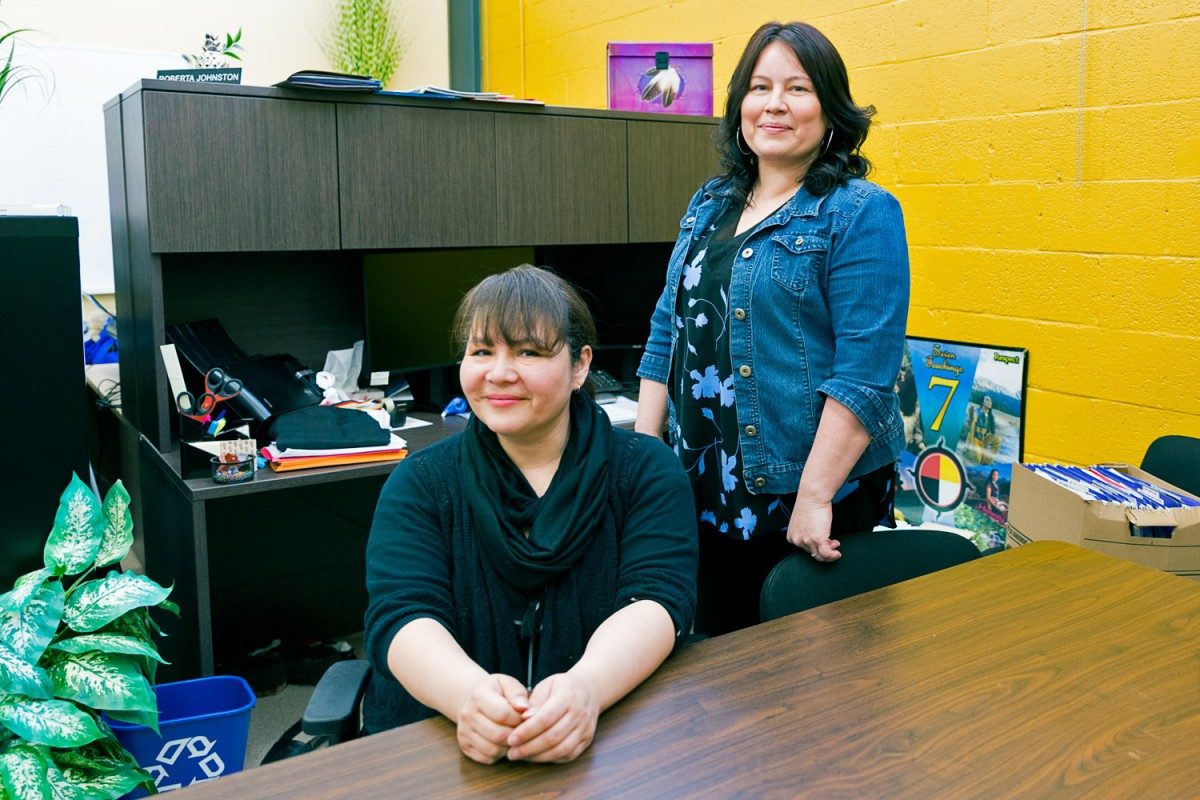
RISE program students Jennifer Soldier (left) and Sherry McKay are learning skills to identify and assist students with special needs.
Students’ progress biggest reward to resource teachers
RISE program addresses special needs
For Jennifer Soldier [BA/11, BEd/13], a Sagkeeng First Nation high-school instructor, resource-teacher training is essential to improving the lives of students who need help the most.
“It’s about having a good life—personal well-being and quality of life,” Soldier says, explaining the Ojibwe term, “mino pimatiziwin”, a teaching virtue in her home community. “We’re trying to teach our children the skills to have a good life: Bottom line.”
For those who don’t get the support they need, Soldier paints a bleak future.
“They end up in the justice system and they have a lot of social issues. They get into that whole system of dropping out of school, social welfare and the poverty cycle,” says the U of M alumna.
Soldier and classmate Sherry McKay [BA/10, BEd/12] were part of a 66-student cohort of elementary-, middle- and high-school teachers from First Nations schools across the province gathered at Yellowquill College recently as a part of training for the RISE program (Resource Inclusive Special Education).
The RISE program trains teachers like Soldier to identify students with reading, behavioural and cognition issues, as well as developing teaching strategies, education plans and ways to modify curriculum to better meet the needs of students.
The program, supported by the University of Manitoba and Manitoba First Nations Education Resource Centre (MFNERC), offers teachers a PBDE to those completing 30 hours of course work throughout the year.
Soldier says that most of the teachers in Sagkeeng grew up in the community and many of them have worked in the schools for 20-30 years, but she now sees a growing need for resource training with staff retirements, and with changing needs in the classroom as well.
“I was teaching Grade 9 math, and I found that when we did an assessment with the students, a lot of them were very low in math when they came to high school,” Soldier says, adding as a result, she had to adapt the coursework to the students’ learning level. “We need to bring in a lot of the information that they’re teaching in this program.”
Classmate Sherry McKay, a teacher at Sagkeeng Anicinabe Community School, says a school administrator recommended her to the program, since they currently have only one resource teacher for nursery to Grade 8 students and as a result, some students are never diagnosed.
“It’s no one’s fault, per se, but at the same time, these courses are not offered to just your regular classroom teachers,” says McKay, who has two degrees from the U of M.
Soldier concludes by saying the biggest reward for resource teaching is being able to meet the needs of the students.
“That’s the biggest reward: seeing progress. Seeing them gain self-esteem, and gaining the skills required to function in school and later in society. So I think that’s the biggest reward for this type of work,” she says.






